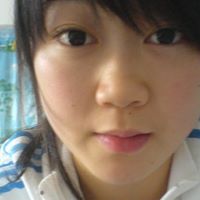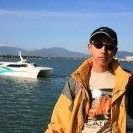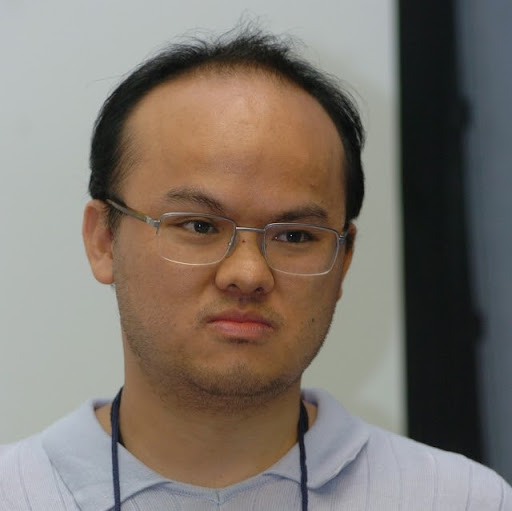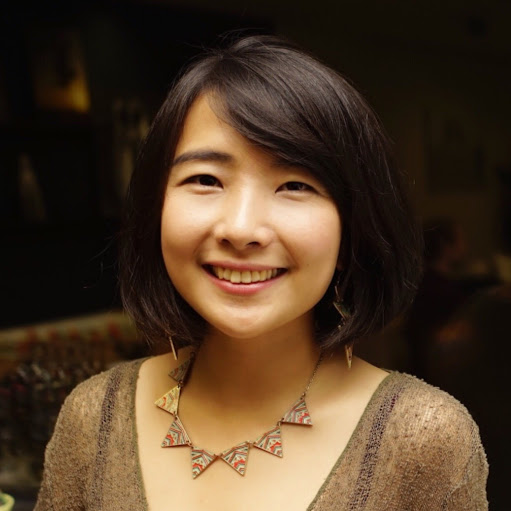Qing Jun Wang
age ~61
from Sugar Land, TX
- Also known as:
-
- Qing J Wang
- Qingzun Wang
- Qingjun Wang
- Quing Jin Wang
- Quing J Wang
- Hehong Wang
- Hehong Wei
- Wang Qingjun
Qing Wang Phones & Addresses
- Sugar Land, TX
- Tempe, AZ
- Richmond, TX
- Stafford, TX
- Missouri City, TX
- Prescott, AZ
- 4111 Turtle Trails Ln, Sugar Land, TX 77479
Education
-
Degree:Associate degree or higher
Us Patents
-
Biopolymer-Coated Two-Dimensional Transition Metal Chalcogenides Having Potent Antimicrobial Activity
view source -
US Patent:20210289791, Sep 23, 2021
-
Filed:Jul 30, 2019
-
Appl. No.:17/264766
-
Inventors:- Scottsdale AZ, US
Qing Hua Wang - Scottsdale AZ, US
Sanchari Saha - Tempe AZ, US
Abhishek Debnath - Tempe AZ, US -
International Classification:A01N 59/16
A01N 59/02
A01N 25/32
A01N 25/10
A61L 31/16
A61L 31/10 -
Abstract:Biocompatible polymer-coated transition metal chalcogenide (TMC) nanomaterials are provided herein. In particular, provided herein are two-dimensional polymer-coated TMC nanomaterials having excellent antimicrobial properties and biocompatibility, as well as methods of inhibiting microbiological growth on, or in, devices coated by or otherwise comprising the biocompatible polymer-coated transition metal chalcogenide (TMC) nanomaterials. In some cases, the biopolymer coating encapsulating the TMC nanomaterial comprises short synthetic single-stranded DNAs (ssDNAs). As described herein, ssDNA-encapsulated TMDCs exhibit no cytotoxicity against human cell lines at concentrations up to 0.25 mg/mL, but they exhibit exceptionally strong bactericidal activity against both gram-positive and gram-negative bacteria, including antibiotic-resistant and a gram-positive methicillin-resistant (MRSA) strain. In other cases, TMDCs encapsulated by poly-L-lysine and Pluronic F77 display strong activity against multi drug resistance bacteria and form coatings that strongly inhibit bacterial biofilms, while TMDCs encapsulated by chitosan exhibit strong activity against fungi.
-
3D-Printed Nanocomposites With Metal Diboride Nanosheets
view source -
US Patent:20200377727, Dec 3, 2020
-
Filed:Mar 27, 2020
-
Appl. No.:16/832225
-
Inventors:Alexander A. Green - Scottsdale AZ, US
Matthew Gilliam - Tempe AZ, US
Ahmed Yousaf - Hillsboro OR, US
Qing Hua Wang - Scottsdale AZ, US -
International Classification:C08L 83/04
C08K 3/38
C08G 77/56 -
Abstract:A polymerizable composition for 3D printing includes a photocurable polymer resin and metal diboride nanosheets. The resulting polymer nanocomposite includes a polymer matrix and metal diboride nanosheets dispersed throughout the polymer matrix. A method of synthesizing a nanomaterial-containing resin for 3D printing includes preparing a dispersion of metal diboride nanosheets in a solvent, and combining the dispersion with a liquid polymer resin to yield the nanomaterial-containing resin. A method of fabricating a nanocomposite structure from the nanomaterial-containing resin includes providing the nanomaterial-containing resin to a three-dimensional printer, forming a three-dimensional structure with the three-dimensional printer, and processing the three-dimensional structure to yield the nanocomposite structure.
-
Adsorption And Removal Of Heavy Metal Ions From Water By Transition Metal Dichalcogenides
view source -
US Patent:20190144305, May 16, 2019
-
Filed:Nov 14, 2018
-
Appl. No.:16/191006
-
Inventors:Qing Hua Wang - Scottsdale AZ, US
Duo Li - Tempe AZ, US
Matthew Gilliam - Tempe AZ, US
Alexander A. Green - Scottsdale AZ, US -
International Classification:C02F 1/28
B01J 20/02
B01J 20/26
B01J 20/24
B01J 20/28
B01J 20/30 -
Abstract:Removing heavy metal ions from an aqueous composition includes contacting an aqueous composition including a heavy metal with nanoflakes comprising MoSfor a length of time sufficient to form nanoclusters of the heavy metal on the nanoflakes. A composite may include a porous polymeric matrix and MoSnanoflakes coupled to the porous polymeric matrix. Making a porous MoS-polymer composite may include combining a solution phase dispersion of MoSwith a polymer precursor solution to yield a mixture, treating the polymer precursor solution to yield a composite precursor, and drying the composite precursor to yield a porous MoS-polymer composite.
Real Estate Brokers

Qing Hui Wang, Philadlphia PA
view sourceSpecialties:
Buyer's Agent
Listing Agent
Listing Agent
Work:
Century 21 Advanrage Gold-Roosevelt
5267 Roosevelt Bvd
267 254-4405 (Office)
5267 Roosevelt Bvd
267 254-4405 (Office)
License Records
Qing Wang
License #:
PNT.040752 - Expired
Issued Date:
Oct 28, 1996
Expiration Date:
Oct 28, 2001
Type:
Pharmacy Intern
Qing Wang
License #:
PST.017372 - Expired
Issued Date:
Jul 7, 2004
Expiration Date:
Dec 31, 2015
Type:
Pharmacist
Name / Title
Company / Classification
Phones & Addresses
Director, Secretary
OLANDS ENTERPRISE INC
3003 Rosemary Park Ln, Houston, TX 77082
5757 Ranchester Dr, Houston, TX 77036
6515 Corporate Dr, Houston, TX 77036
27 Hbr Vw Dr, Sugar Land, TX 77479
5757 Ranchester Dr, Houston, TX 77036
6515 Corporate Dr, Houston, TX 77036
27 Hbr Vw Dr, Sugar Land, TX 77479
Managing M, Director, Managing
TASTE OF DALIAN, LLC
5855 Sovereign Dr STE A, Houston, TX 77036
2313 NW Military Hwy, San Antonio, TX 78231
2313 N W Miliatry #125, San Antonio, TX 78231
2313 NW Military Hwy, San Antonio, TX 78231
2313 N W Miliatry #125, San Antonio, TX 78231
Director, Secretary
SPACETIME GOLDEN COMMUNICATION TECHNOLOGY, USA INC
5855 Sovereign Dr STE A, Houston, TX 77036
5757 Ranchester Dr, Houston, TX 77036
27 Hbr Vw Dr, Sugar Land, TX 77479
5757 Ranchester Dr, Houston, TX 77036
27 Hbr Vw Dr, Sugar Land, TX 77479
THE HUDSON INDUSTRIAL TRADING COMPANY, LLC
Director, President
NEW CENTURY ARTS CENTER INC
5757 Ranchester Dr STE 600, Houston, TX 77036
27 Hbr Vw Dr, Sugar Land, TX 77479
27 Hbr Vw Dr, Sugar Land, TX 77479
MM
YANGGUANG LTD CO
6501 Ranchester Dr APT 415, Houston, TX 77036
Director of Data Processing
Pros Energies Technology Corp
Prepackaged Software Services · Custom Computer Programming Services
Prepackaged Software Services · Custom Computer Programming Services
3100 Main St, Houston, TX 77002
713 529-7767
713 529-7767
Resumes

Qing Wang
view source
Qing Wang St. Louis, MO
view sourceWork:
Neuroimaging Lab
2011 to 2000
Research Associate Biomedical Magnetic Resonance Lab
St. Louis, MO
2006 to 2011
Research Assistant Department of Mechanical Engineering & Material Science, Washington University
St. Louis, MO
2005 to 2006
Research/Teaching Assistant
2011 to 2000
Research Associate Biomedical Magnetic Resonance Lab
St. Louis, MO
2006 to 2011
Research Assistant Department of Mechanical Engineering & Material Science, Washington University
St. Louis, MO
2005 to 2006
Research/Teaching Assistant
Education:
St. Louis, St. Louis
2011
Ph.D. in Mechanical Engineering & Material Science Northeast Dianli University
Jilin, CN
2002
M.S. in Mechanical Engineering Changsha University of Science and Technology
Changsha, CN
1999
B.S. in Mechanical Engineering
2011
Ph.D. in Mechanical Engineering & Material Science Northeast Dianli University
Jilin, CN
2002
M.S. in Mechanical Engineering Changsha University of Science and Technology
Changsha, CN
1999
B.S. in Mechanical Engineering
Skills:
Medical imaging/spectroscopy<br/>Biost... mathematics<br/>C, C Shell, Python, Matlab, <br/>R, SAS and SPSS<br/>SQL, Excel VBA
Lawyers & Attorneys

Qing Jian Wang - Lawyer
view sourceAddress:
O'Melveny & Myers LLP, Singapore Branch
659 318-00xx (Office)
659 318-00xx (Office)
Licenses:
New York - Currently registered 2010
Education:
University of California At Berkeley
Isbn (Books And Publications)
-
Software Process Change: International Software Process Workshop And International Workshop On Software Process Simulation And Modeling, Spw/Prosim 2006, Shanghai, China, May
view source -
Author:Qing Wang
-
ISBN #:3540341994
-
Software Process Dynamics And Agility: International Conference On Software Process, Icsp 2007, Minneapolis, Mn, Usa, May 19-20, 2007, Proceedings
view source -
Author:Qing Wang
-
ISBN #:3540724257
Medicine Doctors

Qing Wang
view sourceSpecialties:
Anesthesiology
Work:
Associated Anesthesiologists
225 N Jackson Ave, San Jose, CA 95116
408 293-7780 (phone), 408 279-2264 (fax)
225 N Jackson Ave, San Jose, CA 95116
408 293-7780 (phone), 408 279-2264 (fax)
Education:
Medical School
Peking Union Med Coll, Beijing, Beijing, China
Graduated: 1991
Peking Union Med Coll, Beijing, Beijing, China
Graduated: 1991
Languages:
Chinese
English
Italian
Russian
Spanish
Vietnamese
English
Italian
Russian
Spanish
Vietnamese
Description:
Dr. Wang graduated from the Peking Union Med Coll, Beijing, Beijing, China in 1991. She works in San Jose, CA and specializes in Anesthesiology. Dr. Wang is affiliated with OConnor Hospital and Regional Medical Center Of San Jose.

Qing M. Wang
view sourceSpecialties:
Physical Medicine & Rehabilitation
Work:
Spaulding Rehabilitation Outpatient
300 1 Ave, Charlestown, MA 02129
617 952-6220 (phone), 617 952-5939 (fax)
300 1 Ave, Charlestown, MA 02129
617 952-6220 (phone), 617 952-5939 (fax)
Languages:
English
Description:
Dr. Wang works in Charlestown, MA and specializes in Physical Medicine & Rehabilitation.
Plaxo

Qing Wang
view sourceTelegent Systems Past: Principle Staff Software Engineer at Motorola, Inc. MPEG4 Encoding Solutions Group
Classmates

Qing Wang
view sourceSchools:
Nanyang Model High School Shanghai China 1986-1990
Community:
George Jiang, Hong Li, Fang Xu

Jie Qing Wang
view source
Wang Qing
view source
Wu Qing Wang Zi
view source
Qing Yan Wang
view source
Qing Xiu Wang
view source
Yu Qing Wang
view source
Qing Phyllis Wang
view source
Si Qing Wang
view sourceYoutube
News

New ferroelectric material could give robots muscles
view source- "Potentially we can now have a type of soft robotics that we refer to as artificial muscle," said Qing Wang, Penn State professor of materials science and engineering and co-corresponding author of the study recently published in Nature Materials. "This would enable us to have soft matter that can c
- Date: Jun 30, 2023
- Category: Science
- Source: Google

3 charged in smuggling horns of endangered rhinos
view source- rhinoceros horns from the U.S. to Hong Kong in 2011 and 2012. Shusen Wei was charged with offering to bribe a federal agent in the Li case. In New York, a third man, Qing Wang, was charged Wednesday for allegedly smuggling libation cups carved from rhinoceros horns from New York to Li via Hong Kong.
- Date: Feb 13, 2013
- Category: Business
- Source: Google

Rhino horn smuggling ring members charged in US
view source- In addition, Qing Wang was charged Wednesday in a related criminal complaint in federal court in the Southern District of New York for his role in smuggling libation cups carved from such horns from New York to Li through Hong Kong.
- Date: Feb 13, 2013
- Category: Business
- Source: Google

China's Stocks Fall as Mideast Unrest Fuels Inflation Concerns
view source- We detect a subtle yet meaningful change in policy wording that suggests the authorities pro-growth bias, Qing Wang, an economist at Morgan Stanley, wrote in a report to clients. Wang said the changes point to upside risks to economic growth and inflation.
- Date: Feb 21, 2011
- Category: Business
- Source: Google
Myspace
Googleplus

Qing Wang
Tagline:
A Programmer

Qing Wang
Work:
SINOHYDRO - Contract Eng. (2004)
Education:
XAUT - Project Management

Qing Wang
Education:
Curtin University of Technology - Civil &Construction Engineering, Curtin University of Technology - Mechanical Engineering

Qing Wang
Education:
UCI - Mechanical Engineering, Tsinghua University - Thermal Engineering

Qing Wang
Education:
Johns Hopkins University

Qing Wang

Qing Wang
Tagline:
Inner Peace

Qing Wang
Flickr
Get Report for Qing Jun Wang from Sugar Land, TX, age ~61














